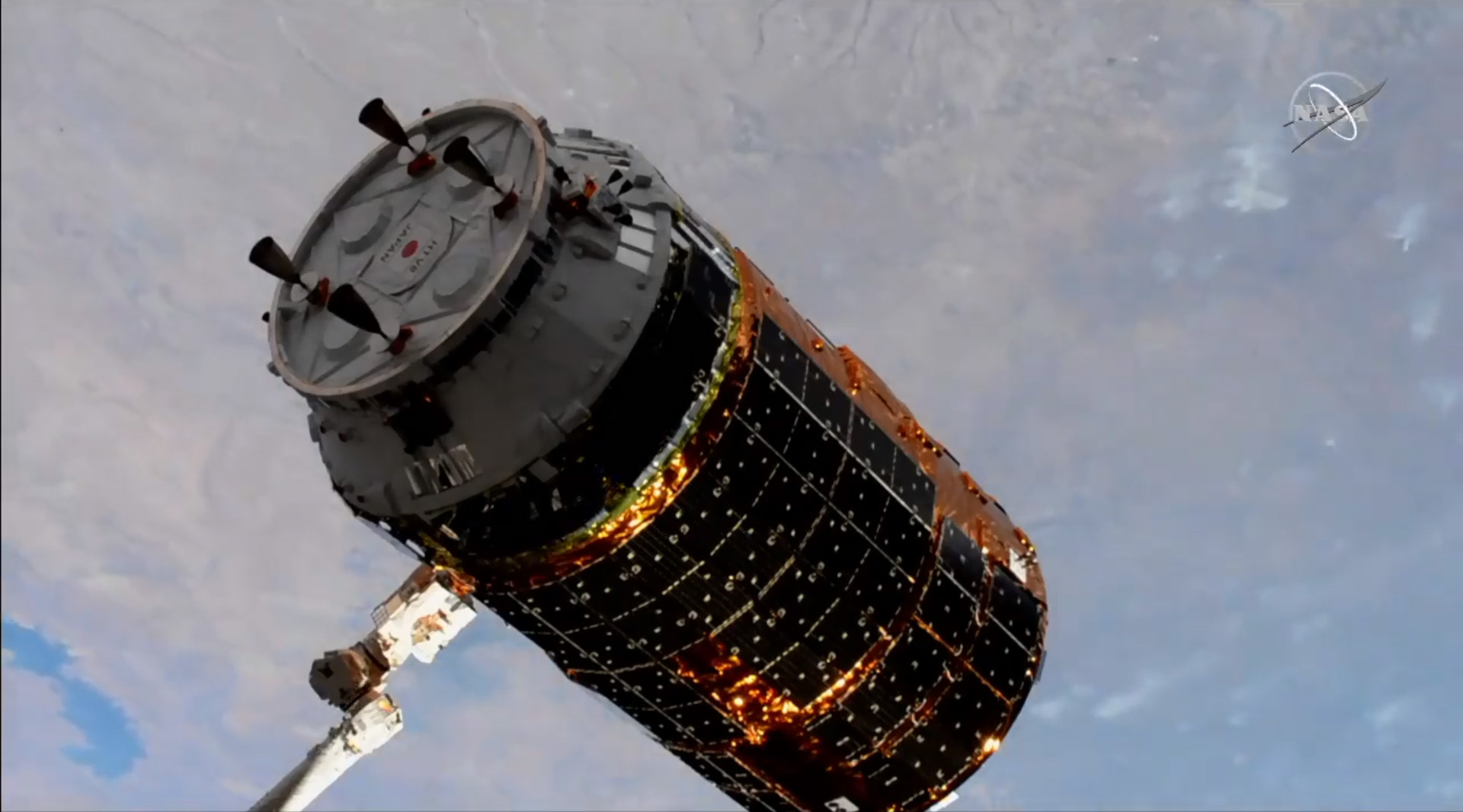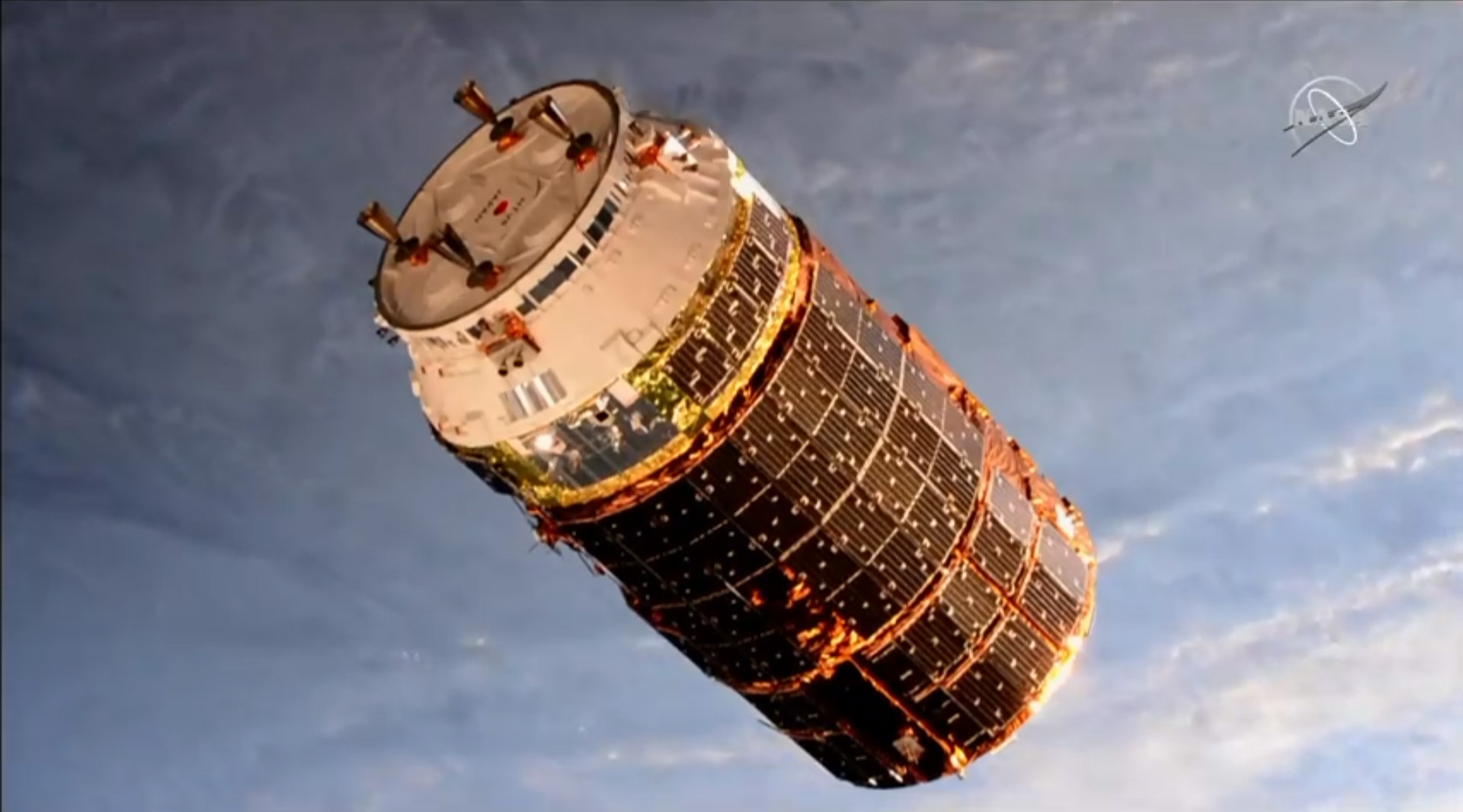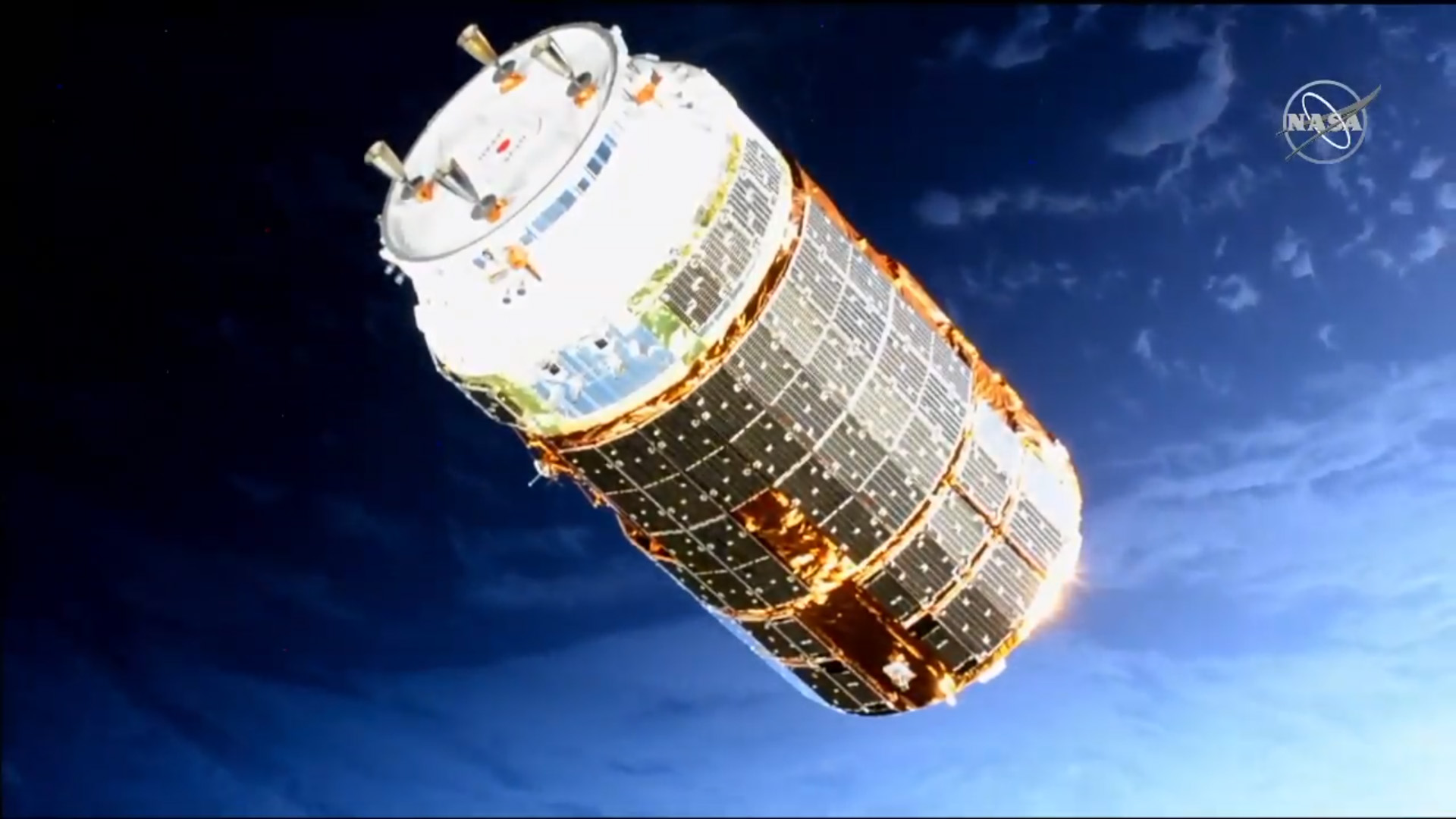Unpiloted Japanese Cargo Ship Delivers Fresh Batteries and More to Space Station

A robotic Japanese cargo ship successfully arrived at the International Space Station Saturday (Sept. 28) carrying more than 4 tons of supplies, including new batteries for the outpost's solar power grid.
The Japan Aerospace Exploration Agency's (JAXA) HTV-8 cargo ship pulled up to the space station at 7:12 a.m. EDT (1112 GMT), where it was captured by a robotic arm wielded by NASA astronaut Christina Koch inside the orbiting lab. The station and HTV-8, also known as Kounotori 8 (Kounotori means "white stork" in Japanese), were soaring 262 miles (422 kilometers) over Angola in southern Africa at the time.
"What you all have done is a testament to what we can accomplish when international teams work together towards a common goal," Koch radioed to NASA's Mission Control in Houston and flight controllers at JAXA's Tsukuba Space Center in Japan. "We're honored to have Kounotori on board, and look forward to a successful and productive mission together."
Later today, flight controllers on Earth will use the station's robotic arm to attach HTV-8 to an Earth-facing berth on the station's U.S.-built Harmony module.
Video: How Japan's HTV Cargo Ships Work
Related: Japan's HTV Space Truck Explained (Infographic)
JAXA launched the HTV-8 spaceraft on a H-IIB rocket from the Tanegashima Space Center in southern Japan on Sept. 24. The spacecraft is packed with food, water, experiment hardware and other supplies for the station's crew.
Chief among HTV-8's cargo are six new lithium-ion batteries to replace aging nickel-hydrogen batteries on two of the outpost's power channels. NASA astronauts will replace the batteries during a series of spacewalks next month, NASA officials have said. During those spacewalks, astronauts will also make repairs to a $2 billion cosmic ray detector, called the Alpha Magnetic Spectrometer-2, using tools delivered by HTV-8, according to Spaceflight Now.
Breaking space news, the latest updates on rocket launches, skywatching events and more!
Photos: Japan's Robotic Space Cargo Ship Fleet


HTV-8 is also carrying a novel prototype laser communications system, called the Small Optical Link for International Space Station, developed by JAXA and the Sony Computer Science Laboratories to boost data communication speeds with the space station.
"Long-distance laser communication technology enables transformation of our society with real-time broad-band communication around the globe as well as expanding the humanosphere and increased activity in space," Sony CSL President Hiroaki Kitano said in a statement.
Other cargo on HTV-8 include a new Cell Biology Experiment Facility, several small CubeSats and an experiment called Hourglass to test gravity's effects on powder and granular material.
Japan's HTV spacecraft are part of a robotic fleet of spacecraft designed to ferry fresh supplies to the International Space Station. At the end of its mission, HTV-8 will be packed with trash and unneeded items, detached from the station and commanded to burn up in Earth's atmosphere for disposal.
- Space Station's Robotic Cargo Ship Fleet (A Photo Guide)
- Photos: Japan Launches HTV-4 Cargo Ship to Space Station
- JAXA: Japan's Aerospace Exploration Agency
Email Tariq Malik at tmalik@space.com or follow him @tariqjmalik. Follow us @Spacedotcom and Facebook.


Tariq is the award-winning Editor-in-Chief of Space.com and joined the team in 2001. He covers human spaceflight, as well as skywatching and entertainment. He became Space.com's Editor-in-Chief in 2019. Before joining Space.com, Tariq was a staff reporter for The Los Angeles Times covering education and city beats in La Habra, Fullerton and Huntington Beach. He's a recipient of the 2022 Harry Kolcum Award for excellence in space reporting and the 2025 Space Pioneer Award from the National Space Society. He is an Eagle Scout and Space Camp alum with journalism degrees from the USC and NYU. You can find Tariq at Space.com and as the co-host to the This Week In Space podcast on the TWiT network. To see his latest project, you can follow Tariq on Twitter @tariqjmalik.
